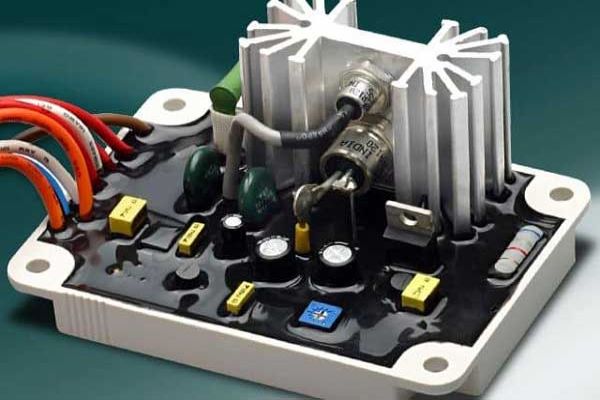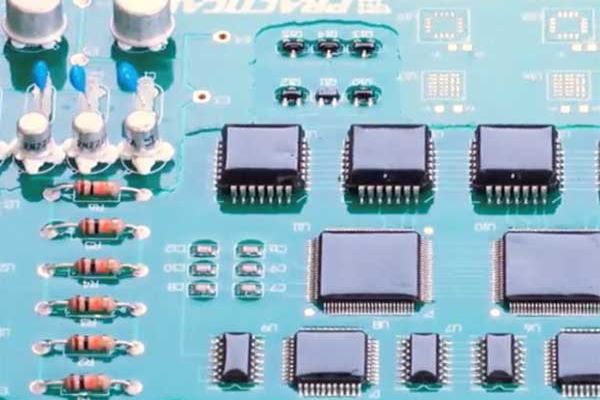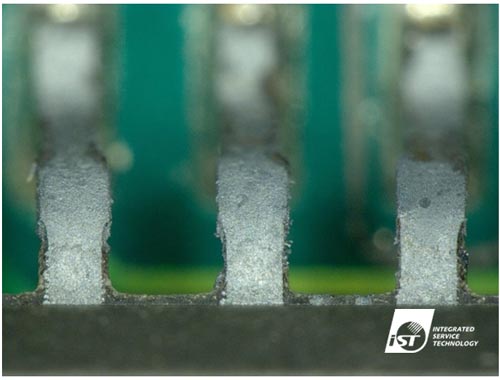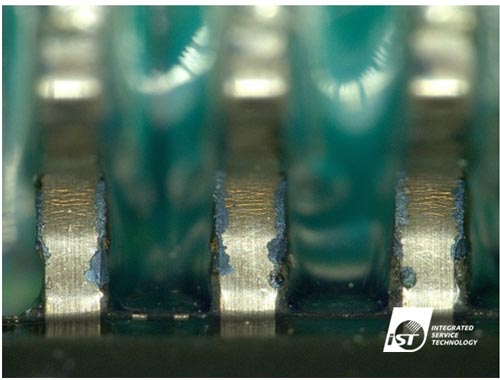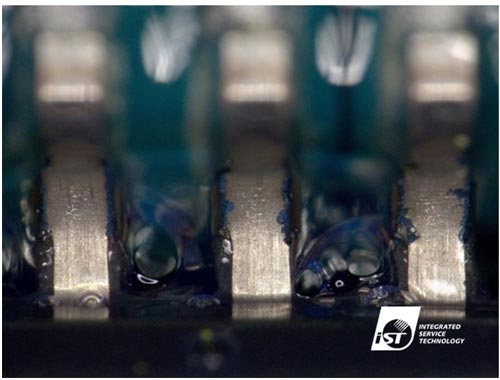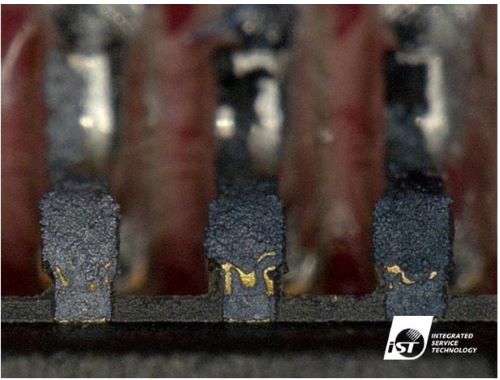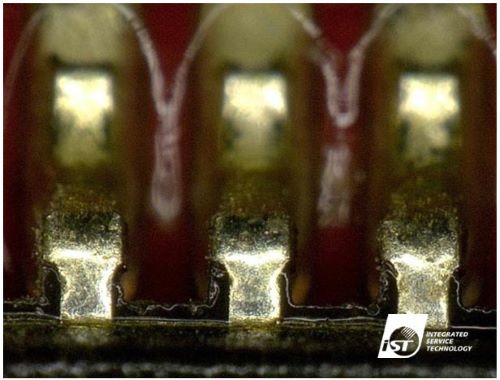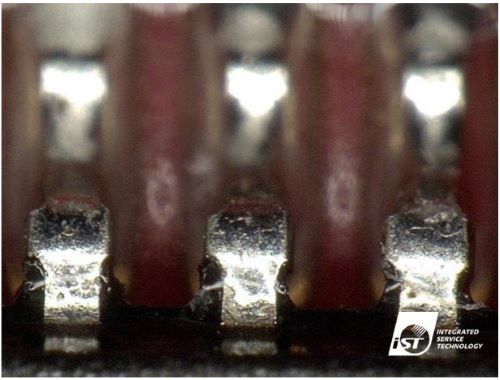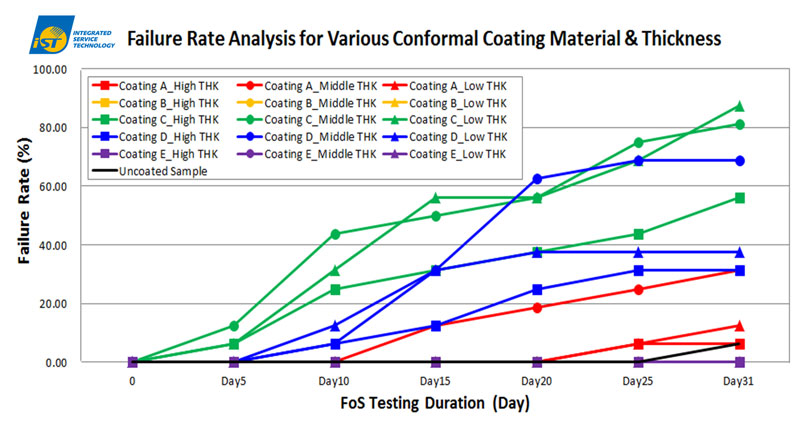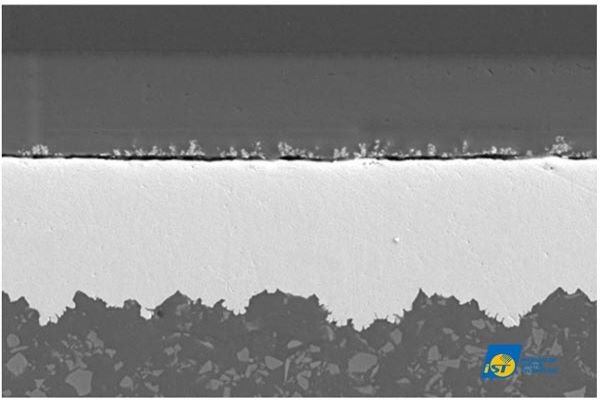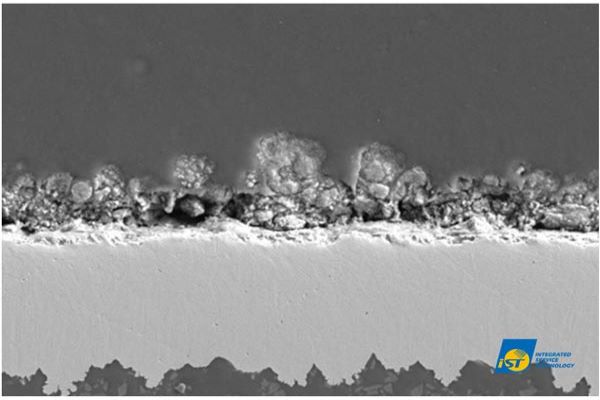Issued Date:2022/12/13 sulfur corrosion
Issued By:iST
Why need to use conformal coating for industrial, automotive and outdoor electronics?
Why does sulfur corrosion failure still occurred on electronics with conformal coating?
How to choose the correct coating material through S-corrosion verification platform?
Conformal coating is a thin polymeric film which conforms to the contours of a printed circuit board to protect the board’s components. In general, it is applied to electronic circuitry and components to protect against moisture, dust and chemicals effects. In general, conformal coating is a popular solution for assembly and system houses once their electronics need to work in harsh environment. In this coursework, we will introduce the corrosion solution for electronics – conformal coating, and also analyze why does the sulfur corrosion failure still occurred on electronics with conformal coating treatment?
sulfur corrosion
1. Why need to use conformal coating for industrial, automotive and outdoor electronics?
The proliferation of Artificial Intelligence (AI), 5G, big data, Internet of Things (IoT), Edge Computing, High Performance Computing (HPC), Electric Vehicle (EV), green energy and energy storage in recent years has necessitated the increased use of electronics. Therefore, the hardware reliability of electronics has received more attention in the industry. With prevalent environmental pollution, air quality will also directly or indirectly influence the life of electronics in indoor and outdoor applications. In general, the hardware reliability of electronics can be easily affected by corrosive gases, moisture, salts, contaminants and particulate matter, especially in environments with high sulfur-bearing gaseous contamination. In general, PCB/Leadframe package creep corrosion and Surface Mount Technology (SMT) passive component sulfur corrosion were potentially caused electronics failure due to the electrical short and open failures occurrence on electronics. Figure 1 show the creep corrosion occurrence on PCB/Leadframe package and sulfur corrosion occurrence on SMT resistor, respectively. Therefore, next generation electronics required not only high performance but also robustness against harsher environments, , especially for industrial, automotive, aerospace and outdoor applications, such as data center, industrial personal computer, electric vehicle, charging pile, energy storage station and low-earth-orbit satellite.
Figure 1: (a) and (b) are PCB creep corrosion failure, (c) is leadframe package creep corrosion failure, and (d) is SMT resistor sulfur corrosion failure.
(Source: iSTLab)In order to effectively block various stress effects from harsh environment. Potting and conformal coating treatments were usually to use in the industry. However, not all of electrical components can be adopted by potting treatment. We need to consider potting compound curing stress, thermal stress, void residue effect on electronics during potting process, and also the original product design factors, including dimension, enclosure, weight, thermal management, manufacture, rework, quality inspection, cost and environmental friendly. Fortunately, conformal coating is a special polymeric film-forming coating product, mainly protect the electronic circuitry and components in harsh environment. It can ensure the safety and reliability of electronics and enhance the life time. Because of some advantages, including rapid manufacturing, easy on rework and low cost. Besides, there is not only the anti-corrosion capability improvement, but also conform to the contours of a printed circuit board that cannot be caused any side effect for following assembly process. Therefore, assembly and system houses will adopt the conformal coating as corrosion solution once their electronics occurred failed in the field or need to work in harsh environment. In this way, the process quality of conformal coating can be directly controlled in house and also provide an immediately improvement to the failure returns from end-customer. Table 1 show the methodology comparison between potting and conformal coating treatments.
Table 1: Methodology comparison between potting and conformal coating treatments
Method Potting Conformal Coating Protectivit Excellent Good Manufacture & Rewor Poor
(Void residue and rework is difficult)Excellent Quality & Inspection Poor
(Appearance is not visible)Excellent
(Appearance is visible)Applicability Poor
(More limited application)Excellent
(Thin and light)Environmental friendly Poor Excellent Example Photo (Source: https://epoxysetinc.com/potting-encapsulating/) (Source: https://chargedevs.com/newswire/dow-introduces-new-silicone-based-material-for-pcb-conformal-coatings/) Why does sulfur corrosion failure still occurred on electronics with conformal coating?
The shortness for current international standards of conformal coating related.
In general, the conformal coating-related international standard will be mainly referred to Association Connecting Electronics Industries (IPC) in the industry, including IPC-HDBK-830A, IPC-CC-830C and IPC-J-STD-001F. Figure 2 show the conformal coating-related international standard in IPC, those standards have defined the guideline for design, selection and application, the requirement for soldered electrical and electronics as well as qualification and performance of electrical insulating compound for conformal coating. The qualification items included material, thickness, uniformity, defect, rework, application, thermal, moisture and salt fog resistance, surface insulated resistance and so on. Some of the others conformal coating-related international standard included IPC-A-610H, IEC-1086-2, MIL-I-46058C, MIL-STD-202H, Method 106, NASA-STD-8739.1, BS5917, UL94, UL746F and SJ 20671.
Figure 2: Some general conformal coating-related international standards from IPC.
(Source: IPC-HDBK-830A, IPC-CC830C and IPC-J-STD-001F)Major conformal coating type can be divided into 8 types, including Silicone Resin (SR), Acrylic (AR), Polyurethane (UR), Epoxy (ER), Paraxylylene (XY), Fluorine-carbon resin (FC), Ultra-Thin Coatings (UT) and Styrene Block Co-Polymer (SC)。The conformal coating type can be determined by coating material. For the hybrid materials will be based on the chemistry type which is the highest percentage by weight. However, the coating type will be classified as UT type that was not limited to material classification if the thickness is low than 12.5um.
There are specific characteristics and properties for different type conformal coatings material. The common qualification items included thickness, adhesion, thermal, moisture, chemicals and salt fog resistance capability, manufacture and rework, universality, porosity, surface insulated resistance level, cost and so on. Unfortunately, there is no corrosive gases test that was defined into all conformal coating-related international standards, especially for sulfur-bearing gaseous contamination. Therefore, this is why sulfur corrosion failure still occurred on electronics with conformal coating if the end environments have high sulfur-bearing gaseous contamination. In addition, the coating quality is a key factor that will also be depended on the dimension, shape and package design of component in conformal coating process. Besides, not all of components can be used conformal coating treatment due to insulated property for conformal coating material. The coating cannot applied to electrical contact, such as gold finger, socket, connector and so on. Figure 3 show some photos of sulfur corrosion probably occurred on the Leadframe package with/without conformal coating material.
Figure 3: Some photos of sulfur corrosion probably occurred on the Leadframe package with/without conformal coating material.
(Source: iST Lab)3.How to choose the correct coating material through S-corrosion verification platform?
In the light of the above, iST Lab have provided to industry a sulfur corrosion verification platform that was helpful to conformal coating selection. Besides, we can assess anti-sulfur corrosion capability and the life time of electronics with various conformal coating materials through the sulfur corrosion verification platform. Figure 4 show failure rate analysis for various conformal coating materials with different thickness level through sulfur corrosion test in iST Lab. For the uncoated Anti-Sulfur Resistor (ASR) as a benchmark, the failure occurrence was observed after 25 days. However, the failure occurrence was observed after 5 days and 10 days for coating C and coating D, respectively. Therefore, not all of conformal coating materials have high robustness against sulfur corrosion. It will increase the risk of accelerated sulfur corrosion failure once we choose the unsuitable coating material, even if the anti-sulfur corrosion design was applied in components.
Figure 4: Failure rate analysis for various conformal coating materials with different thickness level through sulfur corrosion test in iST Lab.
(Source: Dem Lee…Et al.,“Evaluation of the Anti-Sulfur Corrosion Capacity for Chip Resistor and Conformal Coating by Way of Flower-of-Sulfur (FoS) Methodology”, International Microsystems, Packaging Assembly and Circuits Technology Conference 2018, Section 28, 2018.)In addition, the anti-sulfur capability of conformal coating will be determined by the material composition and characteristic, the sulfur corrosion failure still occurred on electronics even we increase the coating thickness, especially for some specific coating materials which can adsorb the sulfur-bearing gaseous contaminants. Table 2 show the Scanning Electron Microscope (SEM) photo comparison between the different coating materials after sulfur corrosion test in cross-section view.
Table 3: SEM photo comparison between the different coating materials after sulfur corrosion test in cross-section view
(Source: iST Lab)Therefore, iST Lab can assisted how to choose the correct conformal coating material the industry, and also assessed anti-sulfur corrosion capability and the life time of electronics with various conformal coating materials through the sulfur corrosion verification platform.
A leading 3rd party testing lab for electronics verification: iST-Integrated Service Technology can provide the various sulfur corrosion resistance tests, and also assess the corrosion simulation with long-term exposure at ISA 71.04-2013 G2, G3 severity level or field environment. Besides, we can adopt the customized design of experiment to assess the anti-sulfur corrosion life time through the accelerated test. If you need additional information, please kindly feel free to contact with Joshua Hsueh, at +886-3-579-9909 #6486 │ Email: WEB_GE@istgroup.com;marketing_tw@istgroup.com
Other services you may be interested in
sulfur corrosion



